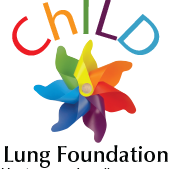Children with NEHI often have rapid and difficult breathing, low levels of oxygen in the blood (hypoxemia), and crackles are heard on examination with a stethoscope. Wheezing, although not characteristic, may also occur. Children may be initially diagnosed with asthma or prolonged respiratory infections as the symptoms may overlap with these. However, children with NEHI generally do not respond to asthma treatments and corticosteroids.
The cause of NEHI is poorly understood at this point in time. Although we recognize the increased number of PNECs in NEHI, the mechanism by which they are involved remains unclear. NEHI has been found to run in some families so it suggests there is some genetic basis for this disorder. However, a gene abnormality has not been identified. Environmental causes may also influence the development of NEHI, but much more research must be done to answer these questions.
When any form of chILD is suspected, there are several tests that are commonly done to help with the diagnosis. Lab work to rule out other causes of these symptoms, such as cystic fibrosis or immunodeficiency, is often performed. A bronchoscopy with bronchoalveolar lavage (BAL) is often performed which can look for infection, inflammation, and signs of aspiration into the lungs.
A high-resolution computed tomography (CT) scan of the lungs is often useful in the diagnosis of NEHI, showing a characteristic pattern called ground glass opacities. The lungs also show areas that are inflated to different extents, with some areas being overinflated and some underinflated, creating a mosaic pat- tern on CT.
An Infant Pulmonary Function Test (infant PFT) has become more important in diagnosing NEHI. This test is not always used, because it takes specialized equipment that is not always available to the clinician. These usually show trapping of air in the lungs in NEHI patients.
If all of these tests are characteristic of NEHI, the child may receive a diagnosis of NEHI Syndrome without a biopsy. However, if any of the results or symptoms are not typical, the only way to conclusively confirm the NEHI diagonosis is through a lung biopsy. The biopsy tissue typically has little or no inflammation and when stained with a particular bombesin stain, demonstrates an abnormally increased number of pulmonary endocrine cells (PNECs) within the small airways. PNECs are cells that are usually present in the lining of the airways, alone or in clusters called neuroepithelial bodies (NEBs), and are thought to be involved in lung development. In NEHI, the number of PNECs and NEBs in the airways is always significantly increased.
The treatment for NEHI is mainly supportive. NEHI children often have labored breathing, which uses more calories than normal and can be accompanied by gastroesophageal reflux (GERD). As a result, poor weight gain (failure to thrive) is often seen with NEHI. Optimizing the child’s nutritional status to promote adequate growth is important for overall health.
Oxygen supplementation may also be required. The amount of oxygen needed varies in NEHI patients. Some need oxygen 24 hours a day, while others will only wear it at night and during illness, while some do not require it at all. Most NEHI patients decrease their need for oxygen over time and most eventually grow out of the need for supplementation.
Common colds and flu can be more severe in NEHI patients, so limiting exposure to respiratory infections is also important. Seasonal flu shots and prevention of Respiratory Syncytial Virus (RSV) is recommended.
Oral corticosteroids, which are used to decrease inflammation in other lung disorders, have not been shown to be helpful with the symptoms in most NEHI patients. This is consistent with the limited inflammation seen on lung biopsy.
There is currently limited information on the long-term prognosis, as NEHI has only been recently recognized. However, the symptoms of NEHI usually decrease over time and are not progressive in nature. No death secondary to NEHI has been reported so far.
More information
